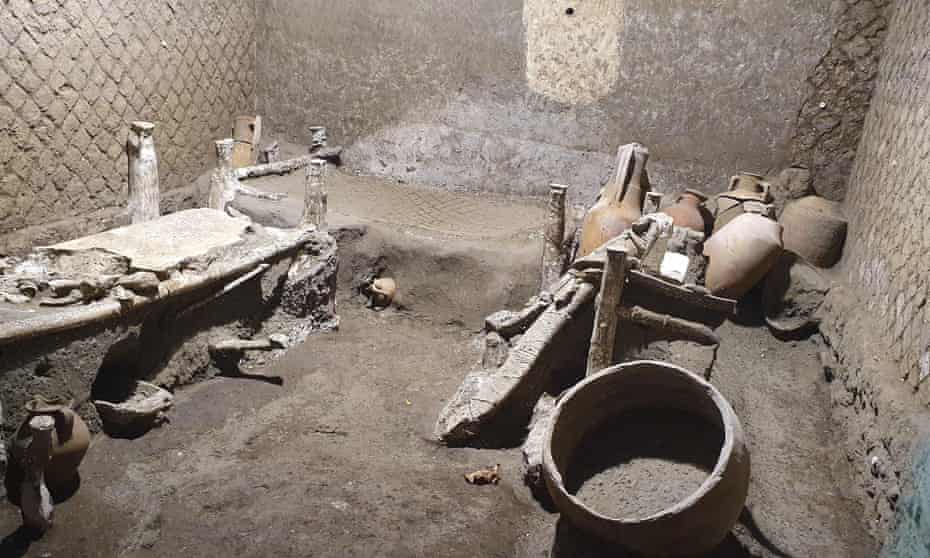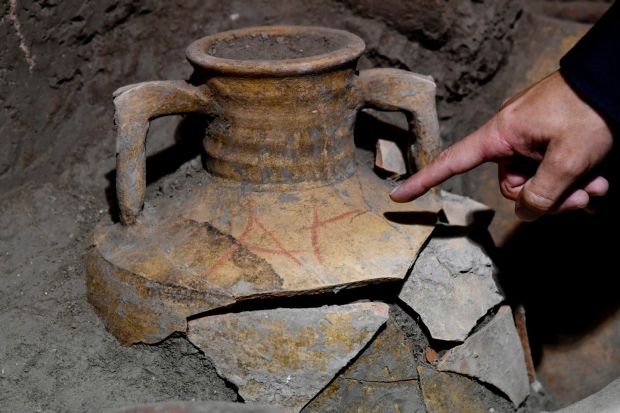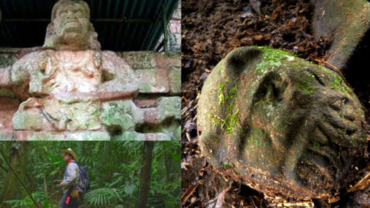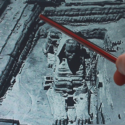Pompeii: Discovery Of Well-preserved Slaves Room Sheds Rare Light On Roman Life
Ella IDE Pompeii archaeologists announced Saturday the discovery of the remnants of a “slave room” in an exceedingly unusual find at a Roman house devastated over 2,000 years ago by Mount Vesuvius’ explosion.
Three wooden beds, a chamber pot and a wooden chest containing metal and fabric items were among the objects found in the cramped living quarters of what was a sprawling villa in Civita Giuliana, about 700 metres north-west of Pompeii’s city walls.

The discovery comes almost a year after the remains of two victims of the AD79 eruption of Mount Vesuvius, believed to have been a master and his slave, were found in the same villa.
A chariot shaft was also found in the room, which archaeologists said had served as the humble lodgings of, possibly, a small family who carried out day-to-day work in the villa, including preparing and maintaining the chariot.
The only natural light in the 16-square-metre space came from a small upper window, and there is no evidence of any wall decorations.
Gabriel Zuchtriegel, director of Pompeii’s archaeological park, said the discovery was “exceptional”, especially as it gives a rare insight “into the precarious reality of people who seldom appear in historical sources, that were written almost exclusively by men belonging to the elite”.

Several personal objects were found under the beds, including large amphorae, used for storing personal possessions, and ceramic jugs. The three beds, one child-size, were made of rope and wooden planks.
“What is most striking is the cramped and precarious nature of this room, which is something between a dormitory and a storage room,” said Zuchtriegel.
“It is certainly one of the most exciting discoveries of my life as an archaeologist, even without the presence of great ‘treasures’. The true treasure here is the human experience – in this case of the most vulnerable members of ancient society – to which this room is a unique testimony.”
Excavations on the site of the Civita Giuliana villa began in 2017 and several relics have been found, including a ceremonial chariot and a stable containing the remains of three harnessed horses.
In May, three frescoes looted from the villa in 2012 were returned to the archaeological park.
Casts were created of the remains of the two Vesuvius victims found in the villa last November. The two men, lying close together, are believed to have escaped the initial phase of the eruption, when the city was blanketed in volcanic ash and pumice, only to then be killed by a further blast the following day.

Experts said the younger man, who was probably between 18 and 25, had several compressed vertebrae, which led them to believe that he was a manual labourer or slave.
The older man, aged between 30 and 40, had a stronger bone structure, particularly around his chest, and was wearing a tunic. They were found lying in what would have been a corridor in the villa.
In August, the partially mummified remains, including hair and bones, of a former slave who rose through the social ranks were found in a tomb at the necropolis of Porta Sarno, one of the main gates into Pompeii.
The tomb is believed to date from the decade before the city was destroyed by the eruption of Mount Vesuvius.
Last month, the partially mutilated remains of a man buried by the eruption were found on what would have been the beach at Herculaneum, the ancient Roman town a few miles north of Pompeii.
Archaeologists said the man, believed to have been between 40 and 45, was killed just steps from the water as he tried to flee the eruption.



